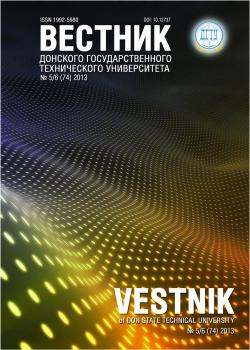A plane deformation of a circular cylinder under different systems of statically equivalent loads is considered. The loading is done by the symmetrical constant-rate loads with respect to the centerline; the loads are applied to the cylinder side. Three load cases are analyzed: diametric forces along two generators (Hertz basic feasible solu-tion), uniform normal loads, and uniform parallel forces. The comparison of equivalent stresses based on Mohr theory of strength with the tension intensity of the basic feasible solution in the failure plane is presented. Based on this comparison, the appropriateness of identifying the normal stress in the diametric plane under the speci-men fracture, and of its tension stress limit is discussed. It is proved that the normal stress in the diametric plane of crushing the specimen in the Brazilian test technique is not a material tension limit; and it may be several times less than the specified stress limit for some brittle solids.
stress, stress limit, Brazilian technique, plane problem, complex potentials, brittle solids, mechanical testing.
Введение. Выполнение прямых испытаний на одноосное растяжение неметаллических хрупких материалов связано с технической проблемой приложения к образцу растягивающих осевых сил. Эту проблему решает заделка концов образца в специальных наконечниках посредством эпоксидных [1] или иных клеевых материалов, сплавом Вуда [2] и др. Оборудование образцов такого рода устройствами значительно удорожает опыты и фактически исключает их массовое и сколько-нибудь оперативное исполнение.
1. Molotnikov ,V. Y. Metody modelirovaniya v zemledelcheskoy mekhanike. [Simulation techniques in the agricultural mechanics: Dr.phys.-math.sci.diss.] Persianovka, 2003, 291 p. (in Russian).
2. Spivak, A. I., Popov, A. N. Razrushenie gornykh porod pri burenii skvazhin. [Destruction of rocks at drilling chinks]. Moscow, Nedra, 1986, 208 p. (in Russian).
3. Rodriguez, T., Navarro, C., Sanchez-Galvez, V. Splitting tests: an alternative to determine the dy-namic tensile strength of ceramic materials. Journal de Physique, 1994, vol. IV, pp. 101-106.
4. Interstate Standard 23775-79. [Carbon products. Methods of determination of strength in compres-sion, bending, breaking (diametrical compression)]. Moscow, IPK Izdatelstvo standartov, 2001, 8 p. (in Rus-sian).
5. Interstate Standard 10180-90. [Concrete. Methods of determination of strength on control samples]. Moscow, Standartinform, 2006, 32 p. (in Russian).
6. Muskhelishvili, N. I. Nekotorye osnovnye zadachi matematicheskoy teorii uprugosti [Some primary goals of the mathematical theory of elasticity]. Moscow, Nauka, 1966, 708 p. (in Russian).
7. Building regulation СН 484-76. [Instruction on engineering surveys in mine openings intended for al-location of the national economic assets.] Moscow, USSR Gosstroy, 1977, 34 p. (in Russian).
8. Interstate Standard 473.7-81. [Chemically-resistant and heat-resistant ceramic products. A method of determination of strength in breaking]. Moscow, Standartinform, 1981, 14 p. (in Russian).
9. Molotnikov, V. Y. Mekhanika konstruktsiy. Teoreticheskaya mekhanika. Soprotivlenie materialov [Structural mechanics. Theoretical mechanics. Resistance of materials.] St. Petersburg, Lan’, 2012, 544 p. (in Russian).
10. Spravochnik (kadastr) fizicheskikh svoystv gornykh porod [Reference book (cadaster) of physical properties of rocks]. Moscow, Nedra, 1975, 279 p. (in Russian).
11. Birger, I. A., Mavlyutov, R. R. Soprotivlenie materialov. [Resistance of materials]. Mos-cow, Nauka, 1986, 561 p. (in Russian).





